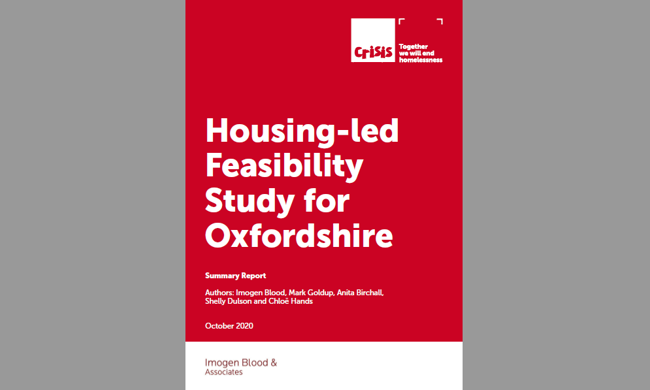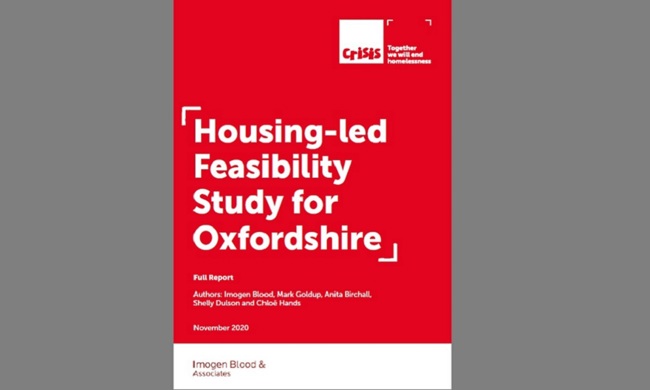Housing-led Feasibility Study for Oxfordshire
09.11.2020
The study investigated the feasibility of Oxfordshire moving to and implementing a housing-led response to homelessness in its county. It was commissioned by Crisis and Oxfordshire country council and overseen by a steering group made up of representatives from the district councils of Cherwell, West Oxfordshire, Oxford City, South Oxfordshire and the Vale of White Horse. It was conducted by Imogen Blood & Associates.
Key Findings
A review of the current service provision in Oxfordshire found that:
- Oxfordshire currently has over 1,110 units or bed spaces of ‘transitional’ supported housing for adults and young people experiencing homelessness and or/mental health challenges. 8% of these involve floating support, which could be delivered independent of the accommodation. A referral to the supported housing pathway is the default response for single people who are experiencing homelessness.
- There are a number of other services delivered across the county to address people experiencing or at risk of homelessness which include: up to 30 Housing First tenancies, Private Sector Access schemes, Housing advice, daytime services offering food and both practical and emotional support, Street Outreach, tenancy sustainment support, Income maximisation and debt support, employment support, mental health support and substance use support.
- Despite this, there are high levels of homelessness in the area and around 4,200 single households came into contact with the homelessness system in Oxfordshire in 2018-19. Those with lived experience of homelessness in the area reported several barriers to accessing support, including administrative barriers, disillusionment and a lack trust and unsuitability of supporting housing.
- Those with lived experience of homelessness also reported the following barriers to private rented housing: affordability of rents compared with the Local Housing Allowance Rate; difficulty finding and securing properties in a competitive market even with financial assistance; poor quality or badly managed properties and lack of support available within the private sector.
- The supply of affordable housing was identified as an issue in Oxfordshire, however there were a number of opportunities identified to address this including: a strong commitment to housing development in the countywide Development Plan, a growing appetite among Register Providers to explore Housing First and tenancy sustainment services, increased Local Housing Allowance rates following the pandemic.
The report concludes that there are a number of opportunities to develop a housing led approach in Oxfordshire and puts forward the following recommendations which are underpinned by a trauma-informed approach, including peer support and better use of data to evaluate outcomes:
- Prevention: the development of a comprehensive Homelessness Prevention Strategy which looks to intervene at various points in people’s pathway towards homelessness, with an emphasis on intervening at the earliest opportunity.
- A housing led response to people who are already homeless: This should include multiagency casework using a By Name List approach; creating an assessment hub as a way in, ensuring that people are assessed by skilled staff, utilising a strengths-based approach, a direct route in to Housing First for those who require the services; and Rapid re-housing to a range of accommodation options, dependant on the needs of the client.
- Transition Planning: Key aspects of this are: increasing the investments in evidence-based prevention activities in the city as well as the supply of affordable housing; reviewing Housing Allocation policies to remove barriers faced by those who are homeless in the county; and re-thinking commissioning by moving away from competitive and traditional contract models to an alliance-style approach with providers incentivised to work together with collective accountability.


